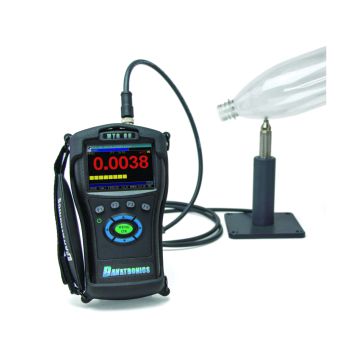
Three (3) Simple Steps to Measure Wall Thickness of PET Bottles
PET bottles are generally utilized in the bundling business. Polyethylene terephthalate or PET is a regularly utilized plastic and is significantly favored in light of its recyclable properties.
Few of the items which utilize PET bottles are as per the following:
- Bottled water
- Ketchup
- Jars
- Juices and carbonated beverages
- Cosmetics
- Household items
 Presently a days, top organizations overall utilize PET bottles for satisfying their bundling needs. With time, it had become a need to utilize great material in PET industry.
Presently a days, top organizations overall utilize PET bottles for satisfying their bundling needs. With time, it had become a need to utilize great material in PET industry.
To test the quality of PET container there are numerous tests including Burst Pressure, Drop Testing, Moisture Analysis, Top Load test and so on
However, the most significant of everything is the wall thickness test for PET Bottles. The wall thickness is a major indicator of quality as it has a significant impact on the strength of the bottles. If the wall thickness of the bottles is not of proper level, it might cause immense loss to the quality of the bottles and eventually impact the safety and quality of the products that are packaged in the bottles. Measurement of wall thickness of the PET bottles is easy and can be performed utilizing the Wall Thickness Gauge.
3 Steps for estimating wall thickness in PET bottles
Precise thickness estimation is a significant testing standard. It is currently conceivable to ascertain the thickness of PET bottles in 3 simple strides through a Non-damaging test strategy on Wall thickness Gauge. It is a light-weighted testing instrument built to perform quicker, exact, and different estimations for non-attractive materials like plastics, glass, composites, aluminum, and titanium. It deals with the guideline of Hall Effect.
A Hall Effect sensor is an electronic semiconductor which responds to attractive field changes by changing voltage which shows up on its surface when an electric flow go through it.
3 simple strides to quantify the exact estimation of wall thickness of PET bottles through wall thickness gauge.
Step 1
A little ball will be put on one side of the test which functions as an objective, draws in the attractive field made by the test magnet
Step 2
Place the attractive test on the contrary side. The Hall Effect sensor is incorporated into a little test with a magnet for the production of the attractive field around the sensor.
Step 3
The distance between the objective and the test is then determined by recording the voltage changes across the Hall Effect sensor.
With Pacorr testing instruments, keep up the wall thickness of your PET bottles and keep up your market notoriety by serving quality merchandise
What People Say
Thanks to Pacorr Testing instruments, we have all the required quality testing instruments that have helped us to ensure the best quality delivered to our clients.

Danish
Fair Exports Pvt. Ltd.

